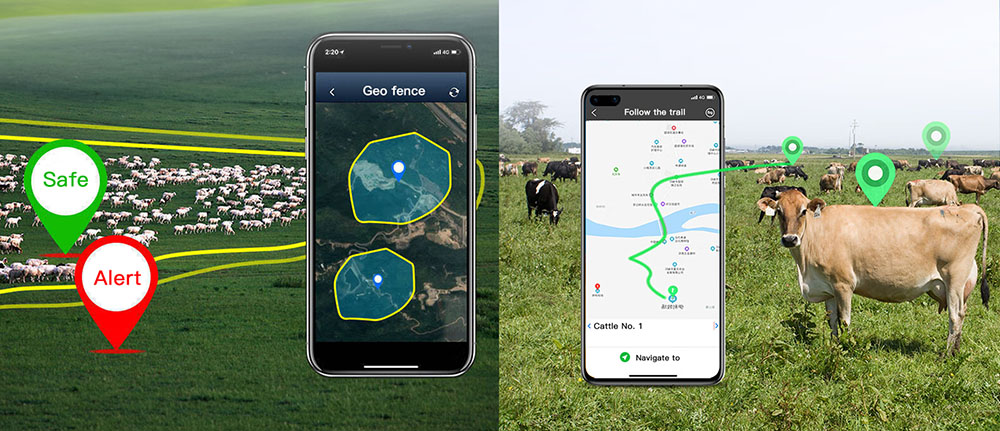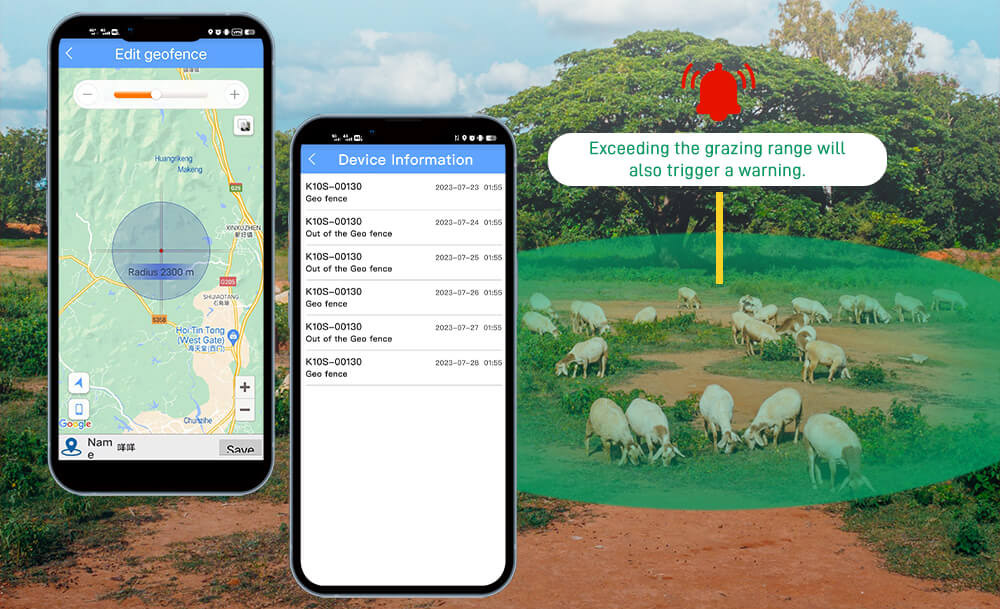Using the Internet of Things (IoT) to protect a herd of cattle involves monitoring and managing the health and safety of the cow. How to protect cow with IOT cow tracker?
1. Real-Time Location Tracking: Use iot cattle tracking GPS or other location technologies to track the whereabouts of each cow. This helps ensure that cows do not get lost or stolen. Set up GEO-fencing and alert systems to receive notifications when cows venture outside predefined areas.
2. Smart Health Monitoring: Install smart health monitoring devices such as neck collars or sensors on each cow's neck or body. These devices can measure physiological indicators like body temperature, heart rate, and activity levels. Connect the sensors to a central data platform that can monitor the real-time health status of each cow. This data can be used to detect potential health issues early.
3. Herd Behavior Analysis: Use cameras or other sensors to monitor the behavior of the cattle herd. This can help identify abnormal behavior, such as illness or disturbances. Deploy smart software to analyze this data for a better understanding of the cattle's behavior patterns. Utilize IoT technology to monitor the feeding and drinking habits of the herd. For example, sensors can detect water levels in troughs or track feed consumption. Set up alerts for when there are issues with water or feed supply.

By implementing livestock tracking devices IoT solutions, farmers can better monitor and protect their cattle herds, improve production efficiency, reduce risks, and enhance the sustainability of their farming operations. Cattle tracking system are a typical application of IoT technology in the cattle industry, helping farmers to better manage the health and productivity of their cows by connecting sensors, data analytics and remote monitoring. Livestock tracking devices are important in IoT monitoring of cattle.
The importance of livestock tracking devices for IoT monitoring of cattle
1. Real-Time Location Tracking: Cattle tracking system use GPS or other positioning technologies to track the real-time location of each cow. This is crucial for ensuring that cattle do not get lost or stolen. If a cow goes missing, farmers can quickly pinpoint its location and take necessary actions to prevent further losses.
2. Geo fencing and Alert Systems: With cattle trackers, it's easy to create virtual GEO fences to ensure that cattle stay within specified areas. If a cow crosses the boundary, the system immediately triggers alerts, enabling farmers to take measures to prevent cattle from getting lost or entering hazardous areas.
3. Cattle Behavior Monitoring: Combined with location information, cattle behavior monitoring becomes more accurate. Farmers can analyze the activity patterns of cattle in different locations, gaining better insights into their behavior and habits. This helps in identifying abnormal behavior such as isolation, unusual movements, or prolonged inactivity.
4. Management and Planning: Having precise knowledge of cattle locations allows farmers to manage feed and water distribution more effectively, ensuring that each cow receives an adequate amount of food and water. This contributes to the health and productivity of the cattle.
5. Data Analysis and Decision Support: Location data can be combined with data from other IoT sensors for comprehensive analysis and decision support. This helps optimize farm operations, improve efficiency, and reduce resource wastage.

The Internet of Things can help farmers manage their herds. Cattle tracking system are essential for IoT monitoring of cattle herds. They provide critical location information, helping farmers ensure the safety and health of their cattle, enhance farming efficiency, and provide additional data support for farm management. This information aids in better understanding cattle behavior and needs.





